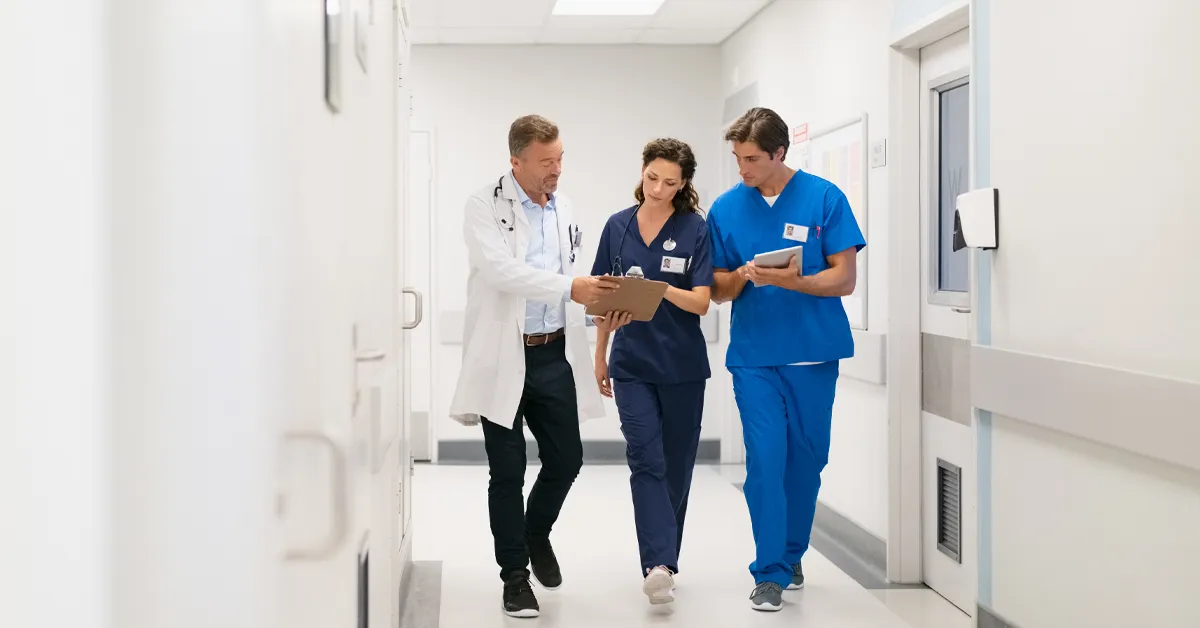The Centers for Medicare and Medicaid Services (CMS) made significant changes to its CPT codes to incentivize more providers and clinics to deploy remote patient monitoring (RPM).
RPM CPT codes are necessary for healthcare providers to be reimbursed for their services. Let’s discuss the CPT codes and their importance to providers and patients.
What Are CPT Codes?
Current Procedural Terminology (CPT) codes are numbers assigned to every task and service a provider administers to a patient, including medical, surgical, and diagnostic services.
For an RPM program, this refers to billing clients for remotely monitoring their health while providing healthcare. CPT codes are used for billing the CMS, resulting in a relatively new revenue model for health care providers.
The primary Medicare CPT codes for RPM are: 99091, 99453, 99454, 99457, and 99458. We’ll explain what each of these are below.
Why are CPT Codes Important in Remote Patient Monitoring?
The CPT codes for remote patient monitoring are important because they provide a way to track patients’ care and compare the effectiveness of different treatments.
Without CPT codes, it would not be easy to accurately track the services provided, and to ensure that providers are properly reimbursed for their work.
In addition, CPT codes help to ensure that patients receive the correct level of care, and that providers are held accountable for their actions.
CPT Code 99453
Remote monitoring of physiologic parameter(s) (e.g., weight, blood pressure, pulse oximetry, respiratory flow rate), initial set-up, and patient education on equipment use.
CPT Code 99454
Remote monitoring of physiologic parameters (e.g., weight, blood pressure, pulse oximetry, respiratory flow rate), initial device supply with daily recordings or programmed alerts transmission, every 30 days.
CPT Code 99457
Time spent for remote physiologic monitoring treatment management services provided by clinical staff, physician, or other qualified health care professional within a calendar month.
This requires an initial 20 minutes of interactive communication with the patient or caregiver during the month.
CPT Code 99458
Time spent for remote physiologic monitoring treatment management services provided by clinical staff, physician, or other qualified health care professional for an additional 20 minutes of RPM services in a calendar month.
This requires an additional 20 minutes of interactive communication with the patient/caregiver during the month.
CPT Code 99091
Collection and interpretation of physiologic data (e.g., ECG, blood pressure, glucose monitoring), digitally stored and/or transmitted by the patient and/or caregiver to the physician or other qualified health care professional, qualified by education, training, licensure, regulation (when applicable) requiring a minimum of 30 minutes of time, every 30 days.
NOTE: Check the general national Medicare fees on the 2022 Medical Physician Fee Schedule. Please note that commercial reimbursement rates vary by location. Your local payer representative or Medicare Administrative Contractor can provide more details.
The CMS has made it possible for providers to be compensated for remote physiologic monitoring. And now they are doing the same for remote therapeutic monitoring and treatment management.
How to Bill for Remote Patient Monitoring
If you provide remote patient monitoring services, you may be able to bill for these services. Here are three tips to help you get started.
- Check with your payers. Many payers, including Medicare, reimburse for RPM services. However, each payer has different requirements, so it’s important to check with your payers in advance to see if they cover RPM services and, if so, what their requirements are.
- Get the proper coding and documentation in place. Make sure you’re using the correct CPT codes when billing for RPM services and that your documentation meets the requirements of your payers.
- Choose the right RPM company to support selecting the best technology, tools, and services for your practice and seamless billing support.
FAQs about Remote Patient Monitoring CPT Codes
1. What Devices are Approved for Remote Patient Monitoring?
For a remote monitoring device to be used in providing care to a Medicare beneficiary, it must meet the FDA’s definition of a “medical device” as described in section 201(h) of the Federal Food, Drug, and Cosmetic Act.
The device must digitally upload patient physiologic data. This means that data cannot normally be manually self-recorded or self-reported by the patient.
The devices must send valid physiologic data that is reasonable and required to diagnose or treat the patient to build and manage a treatment plan.
Following are some examples of RPM devices:
- Pulse oximeter
- Blood pressure monitor
- Glucose meter
- Weighing scale
- Heart rate monitor
- Spirometer
2. Who is Eligible for CPT Codes 99453 and 99454?
CMS clarified in the 2021 Final Rule that practitioners can furnish RPM services to remotely collect and analyze physiologic data from patients with acute conditions and chronic diseases.
3. Does CPT Code 99453 Cover the Cost of Remote Patient Monitoring Devices?
No, CPT Code 99453 does not cover the cost of RPM devices. Medicare will not reimburse providers for the cost of devices or their shipping fees.
CPT Code 99453 is designed to help patients learn how to use medical devices and compensate healthcare providers for furnishing this service.
Thus, the value of 99453 is the time spent educating these patients, especially when handling the medical device.
4. Can Third-Party Providers Deliver CPT Code 99453 on Behalf of Primary Providers?
Yes, CPT codes 99091 and 99457 are reimbursable by Medicaid. We suggest contacting your insurance provider to clarify their reimbursement options, as circumstances vary by insurance.
Working with a third party that provides patient delivery and set-up logistics frees the primary provider to concentrate on patient care.
Delivering Real-Time and Highly Secure Remote Patient Monitoring
DrKumo, a leader in Connected Health Technology, offers RPM services that feature highly secure and real-time data streaming for acute and chronic care management, disease management programs, hospital-at-home programs, and clinical trials.
DrKumo RPM allows patients to use wearables, sensors, and other monitoring devices to track their vital signs and other health indicators, which they can then share with their providers in real time. This timely information can be used to monitor a patient’s condition, detect early signs of illness or disease, as well as track the progress of a condition over time.
DrKumo RPM is highly-secure, meaning that only authorized individuals (such as a patient’s doctor) will have access to patient data. This ensures that sensitive health information stays confidential and safe.
Join our RPM program now and get reimbursed for the services you furnish. Contact us for more information.








